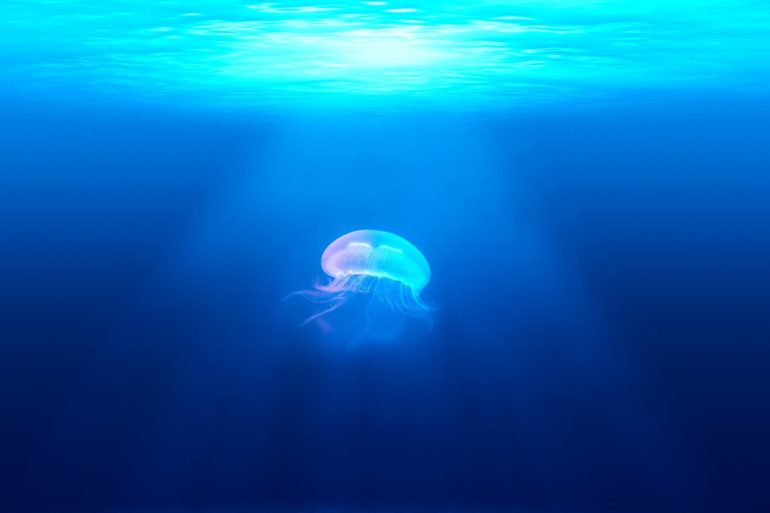Decaying jellyfish blooms fuel the rapid growth of just a few strains of seawater bacteria, effectively keeping this organic material within the water column food web, reveals a new study published in Frontiers in Microbiology. This research furthers our understanding of how marine ecosystems are impacted by jellyfish blooms, which have been observed to be happening on a more frequent basis.
“When jellyfish blooms decay, the sinking detritus is likely to be a temporary but significant source of food for marine microorganisms,” says Dr. Tinkara Tinta, author of this research, based at the Marine Biology Station Piran, National Institute of Biology, Slovenia. “We show that organic matter leaching from decaying jellyfish is rapidly consumed by a few opportunistic fast-growing bacteria that in turn will provide food for other marine animals in the water column.”
The problem with jellyfish
Observed increases in jellyfish populations in several marine ecosystems around the world have been blamed on climate change and the degradation of marine ecosystems. These blooms can be vast and have serious consequences.
“Large jellyfish blooms block cooling intakes of coastal power and desalinization plants, interfere with ship operations, and cause damage to the tourism, fishing and aquaculture industries,” says Gerhard J. Herndl , co-author of this study, and a Professor at the Department of Functional and Evolutionary Ecology in the University of Vienna. “It is therefore important to fully understand the role and impact of these blooms on the marine ecosystem. To date, very few studies have examined the link between jellyfish detritus and its most probable consumers and degraders, marine microorganisms.”
Bacteria—small but mighty
Using state-of-the-art analytical tools and techniques, the researchers investigated the detailed composition of a decaying bloom of Moon Jellyfish from the northern Adriatic Sea and how quickly bacteria in the seawater responded to this potential food source.
“We identified a small number of key microbes that consumed the jellyfish detritus very quickly, rapidly multiplying in the process. Temporarily, these bacteria will form an important component of the water column food web, feeding plankton that are then consumed by larger marine animals. These findings also imply the amount of food reaching the seafloor, the organic material from jellyfish detritus, is effectively reduced by just a few strains of bacteria in the water column,” elaborates Dr. Tinta.
Expanding the study
Professor Herndl explains that while the results of this study fills some of the knowledge gaps surrounding the impact of large jellyfish blooms on marine food webs, more research is needed.
“There are many jellyfish species and other gelatinous organisms, such as salps and comb jellies, which can form large blooms with the potential for causing similar temporary changes in the food web. In addition, not all ecosystems where they occur are alike and these differences may not support the same strains of bacteria. Our investigation can be used as a template and expanded to other gelatinous animals and marine habitats, so that we have a better appreciation of their wider impact on the marine ecosystem.”
Jellyfish contain no calories, so why do they still attract predators?
More information:
Frontiers in Microbiology, www.frontiersin.org/articles/1 … icb.2020.590995/full
Citation:
Decaying jellyfish blooms can cause temporary changes to water column food webs (2020, October 30)
retrieved 30 October 2020
from https://phys.org/news/2020-10-jellyfish-blooms-temporary-column-food.html
This document is subject to copyright. Apart from any fair dealing for the purpose of private study or research, no
part may be reproduced without the written permission. The content is provided for information purposes only.



